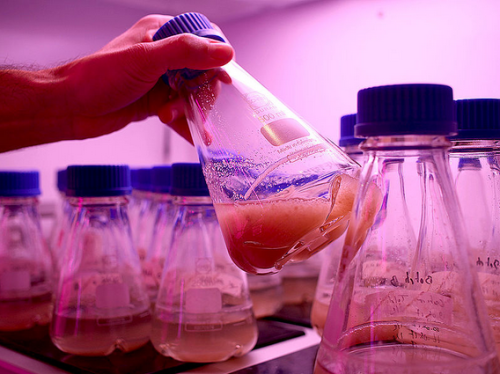UAV-based remote sensing data in the visible and near infrared range as well as thermal infrared data provide information on the vitality of a plant. Within the MonESCA project we could show that it is possible to take advantage of remote sensing observations to differentiate between symptomatic and non-symptomatic plants with respect to Esca. To do so, a sequence of methods was developed and applied. In detail, the analysis is represented by different classification methods, data reduction, pigment modelling and data combinations in order to classify the intensity of symptoms. The setup and optimization of an end-to-end processing chain for the detection and monitoring of Esca-related symptoms is currently in development. Moreover, the exploratory use of simple multi-spectral cameras is currently explored in the framework of the second phase of the MonESCA project.
Esca is a disease in viticulture and it is widely and quickly spreading in Europe favoured by climate change. The disease became relevant in the 1990s in Luxembourg and as of now, there is no efficient control treatment available. Having an assessment of the current number of symptomatic plants and the development over time is needed to develop an advisory strategy. A regularly updated, remote sensing-based monitoring of the appearance and intensity of symptoms can help the winegrowers to better plan possible actions (e.g. keeping/replacing/resetting/surgery individual plants, new planting of entire vineyards). Furthermore, it helps the governmental institutions (in this case the Institute Viti Vinicole, Remich) to get information on the relevance and spreading of the disease over Luxembourg to develop measures, research focus and training with respect to Esca.
UAV-based remote sensing data in the visible and near infrared range as well as thermal infrared data provide information on the vitality of a plant. Within the MonESCA project we could show that it is possible to take advantage of remote sensing observations to differentiate between symptomatic and non-symptomatic plants with respect to Esca. To do so, a sequence of methods was developedand applied. In detail, the analysis is represented by different classification methods, data reduction,
pigment modelling and data combinations in order to classify the intensity of symptoms. The setup and optimization of an end-to-end processing chain for the detection and monitoring of Esca-related symptoms is currently in development. Moreover, the exploratory use of simple multi-spectral cameras is currently explored in the framework of the second phase of the MonESCA project.
Benefits:
Apart from rather simple case studies, there are currently no standard solutions available for the detection and assessment of Esca symptoms and their intensity.
The LIST solution is expected to enable a more rapid and accurate monitoring of ESCA symptoms and their intensity in vineyards. Note that the TRL of the LIST method is still rather low and more R&D is needed to ensure its transferability in time and space and especially between varieties.
Applications :
The targeted service would offer:
- a regularly/frequently updated monitoring of Esca symptomatic plants for vineyards over a certain period of time
- a single ‘on demand’ inventory of Esca symptomatic plants for vineyard.
Opportunity:
Currently, the priority is to further develop the method with the aim to enable a reliable and high- quality remote sensing-based monitoring of Esca symptoms in vineyards. In particular, we aim to test the application of the method at larger scales (e.g. over several years, larger areas and different varieties and management systems).
Seeking :
Project partners for research projects and/or companies working on a simplification or automatization of the processing chain.







